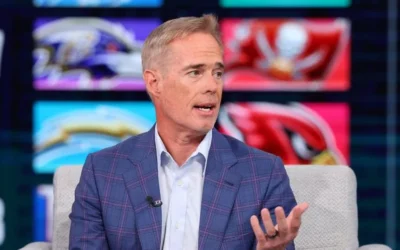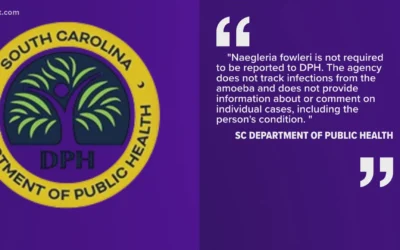Coca-Cola, an iconic brand that has weathered countless changes over the decades, is once again making headlines with its latest announcement: a new version of its beloved cola sweetened with cane sugar instead of the controversial high-fructose corn syrup (HFCS). This development does not only attract soda enthusiasts but also stirs conversations around health, taste, and symbolism in American culture.
The move towards cane sugar aligns with a growing consumer demand for products perceived as healthier or more ‘natural’. With some endorsements alleging approval from former President Donald Trump, Coca-Cola appears to be leveraging a blend of nostalgia and modern trends to capture a unique market segment. So, how does this shift in ingredients affect health, and what implications does it hold for the beverage industry and consumer preferences?
The Sweet Shift: Cane Sugar vs. High-Fructose Corn Syrup
High-fructose corn syrup has long dominated the sweetener market due to its cost-effectiveness for manufacturers and its ability to enhance flavor and extend shelf life. However, in recent years, concerns surrounding the health implications of consuming products loaded with HFCS have gained traction. Some studies suggest a link between HFCS consumption and obesity, diabetes, and other metabolic disorders.
On the contrary, cane sugar, derived from the sugar cane plant, is often viewed as a more natural and ‘wholesome’ option. Though it still adds calories and sugar content to beverages, many consumers perceive it as being ‘better’ for them than its corn syrup counterpart.
Health Implications
Switching to cane sugar might appear as an improvement, but the primary concern remains the same: moderation. Both cane sugar and HFCS contain similar caloric content and can contribute to the same health issues if consumed excessively. Just like corn syrup, cane sugar is a simple carbohydrate that spikes insulin levels, which can lead to a plethora of health issues when overconsumed.
The American Heart Association recommends that women limit their intake of added sugars to 6 teaspoons (25 grams) and men 9 teaspoons (38 grams) per day. A typical can of Coca-Cola contains roughly 39 grams of sugar—nearly double the daily limit for women. Thus, while the switch may yield a taste that many perceive as superior, it does not eliminate the health risks associated with high sugar consumption.
Cultural Context: Coca-Cola and American Identity
The Coca-Cola brand has transcended its status as a beverage company and evolved into a symbol of American culture. The introduction of this cane sugar version can be viewed as a response to changing consumer sentiments while simultaneously appealing to traditional values regarding authenticity and craftsmanship. There is something about cane sugar that evokes a sense of nostalgia; that rich, classic taste may remind consumers of a ‘simpler’ time in American history.
Moreover, the endorsement from Trump, a figure who has polarized opinions in the U.S., might infuse a political layer into Coca-Cola’s marketing strategy. By aligning with a controversial figure, Coca-Cola seems to be tapping into a specific demographic that values Trump’s opinions and may see the return of cane sugar as a confirmation of their personal values surrounding health and authenticity.
The Environmental Angle
An often-overlooked aspect of this transition is its environmental impact. The production of cane sugar involves more intensive water and land usage compared to corn syrup, which raises sustainability concerns. However, depending on the sourcing practices Coca-Cola employs, it could bolster ethical and sustainable agriculture, which resonates with environmentally conscious consumers.
Moreover, if Coca-Cola embraces fair trade practices in its sourcing of cane sugar, it could become a pioneer in promoting sustainability in large-scale beverage production. This can create a ripple effect, where competitors feel pressured to follow suit in order to maintain market share.
The Taste Test: A Sensory Comparison
Coca-Cola’s switch to cane sugar brings with it questions about the taste experience. Many die-hard soda fans argue that cane sugar significantly enhances flavor, providing a crisper, more pronounced sweetness compared to the often cloying and syrupy profile of HFCS.
To understand this difference better, consider conducting a taste test. Invite friends and family to sample both versions of Coca-Cola: the standard HFCS version and Coca-Cola made with cane sugar. Ask them to describe the flavors, aftertastes, and overall experiences. You might be surprised to find varying preferences, which reflect personal palates and expectations.
Market Reactions and Future Trends
The market response to Coca-Cola’s announcement is likely to be mixed, particularly among health-conscious communities and soda dissidents. While some may celebrate the switch as a step toward better health practices, others may view it as a marketing ploy aimed at perpetuating sugar consumption in general.
In light of this, it’s crucial for Coca-Cola to position this new product carefully and to promote responsible consumption. As the beverage industry shifts towards healthier alternatives, there may be an increased focus on zero-calorie sweeteners, naturally derived ingredients, and functional beverages designed to provide health benefits beyond simple refreshment.
Conclusion: A Return to Roots?
In conclusion, Coca-Cola’s forthcoming cane-sugar sweetened soda exemplifies not only a strategic marketing move but also illustrates where cultural sentiment meets contemporary health discussions. As consumers navigate an ever-changing landscape of lifestyle choices, Coca-Cola’s decision could potentially redefine their brand narrative while contributing to wider discussions around health, authenticity, and environmental responsibility.
The implications of this decision extend beyond just the shelf life of a can; they reflect societal values surrounding health, taste, and experience. If history has taught consumers anything, it’s that what we drink is often more than just a beverage; it’s an anthem of who we are, what we deem important, and the legacy we wish to leave for future generations.






